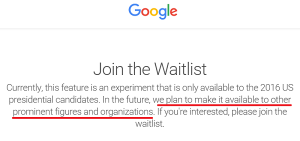 For eCommerce marketers, there are plenty of avenues through which to reach and engage a larger customer base—but many of these come with a hefty price tag. Leveraging content as part of your eCommerce marketing strategy can boost your exposure and increase conversions, while protecting your budget and resources. In the coming years, eCommerce marketers should increasingly focus on visual content, which is 40 times more likely to get customers sharing on social media—meaning you increase your presence without spending big bucks.
For eCommerce marketers, there are plenty of avenues through which to reach and engage a larger customer base—but many of these come with a hefty price tag. Leveraging content as part of your eCommerce marketing strategy can boost your exposure and increase conversions, while protecting your budget and resources. In the coming years, eCommerce marketers should increasingly focus on visual content, which is 40 times more likely to get customers sharing on social media—meaning you increase your presence without spending big bucks.
Why Focus on Content Marketing for eCommerce?
Your goal with eCommerce is simple: get people to your site so they make a purchase. Publishing and promoting content related to the interests of your potential customer is going to be the most effective way to get them interested in what you have to say, and therefore interested in owning what you are selling. In particular, it is your visual content that will make the greatest impact, which makes sense for eCommerce businesses as your products are best represented through imagery.
Plenty of research has been done in recent years that shows why visuals have such a powerful influence over conversions:
- Visuals improve reader attention and brand recall. Adding color has been shown to increase the attention spans of readers by up to 82%.
- Viewers seek out visual content. Content that includes images can get over 94% more views.
Over 56% of B2C marketers surveyed by Content Marketing Institute & Marketing Profs last year said that one of the biggest challenges they’re facing in 2016 is creating content that engages their audience. That’s why more than ever are focusing on developing visual-heavy content, which produces higher levels of engagement.
8 Ways You Can Leverage Visual Content in Your eCommerce Marketing Strategy
There are many ways to leverage content marketing for eCommerce businesses. We share eight effective strategies for production and distribution, below:
#1: Create Product Videos
Your eCommerce marketing strategy should include videos that explain your product in-depth, such as the ones Apple promotes regularly. An estimated 50% of online buyers cite product videos as a resource that contributes to their buying confidence. Videos will allow you to say far more than you could in a text description, and are easier to share across different platforms than technical content.
Source: Apple, Inc.
#2: Make “Unboxing” Videos
A 2014 study by Google showed that unboxing videos on YouTube—those where someone opens a new product and records their initial experience—grew over 57% from the previous year, particularly when it came to the holidays. Unboxing helps create a sense of anticipation amongst viewers and encourages them to make a purchase so they can have their own similar experience.
#3: Repurpose Existing Content
Repurpose existing content to maximize your content creation efforts. Infographics have become popular in recent years as a way to compile your accumulated data into one easy-to-view visual format. Keep infographics streamlined and free from superfluous information so your readers stay engaged.

Source: Imperva Incapsula
#4: Develop Slideshares
The beauty of Slideshare is that users of the platform tend to be seeking out authoritative resources on a given topic. By transforming your text content into slides, you’re not only making it more accessible to potential customers, but you’re also positioning yourself as a valuable industry resource. Check out our blog post for more reasons to create a Slideshare marketing strategy.
Source: Gripad USA
The Best Channels To Share Your Visual Content
The great thing about visual content is that it is easy to share—whether in paid ads or on social media. To get the most out of content marketing for your eCommerce business, try a multi-channel approach, where you share content on social media, leverage industry influencers, optimize your own website, and use paid advertising when appropriate. We break this down below:
#5: Engage on Social Media
If you want social users to engage with your content, start by nurturing relationships with them by engaging with their content. Like posts, follow users, and craft updates that are helpful and informative to your audience. For eCommerce businesses, it’s especially important to leverage visual content platforms such as Pinterest and Instagram.
#6: Find Influencers
Getting your content shared and promoted by social media users who are considered to be “influencers” exposes you to a larger audience and the recommendation of a verified resource. Reach out to industry bloggers, social media personalities, and others who will help expand your customer base. Check out our blog post to earn more about leveraging influencer marketing.

#7: Maximize SEO
While it’s a great idea to share the content you create on external channels, you can also drive traffic to your website by hosting your content there, as well. Make sure you use SEO best practices to maximize the visibility of your content.
#8: Pay to Promote
Don’t overlook forms of paid marketing to expose your content to greater numbers than ever. The specialized targeting of paid ads on search engines and on social platforms can make sure that your message reaches the audience most likely to convert.
Digital & Social Articles on Business 2 Community
(97)
Report Post




